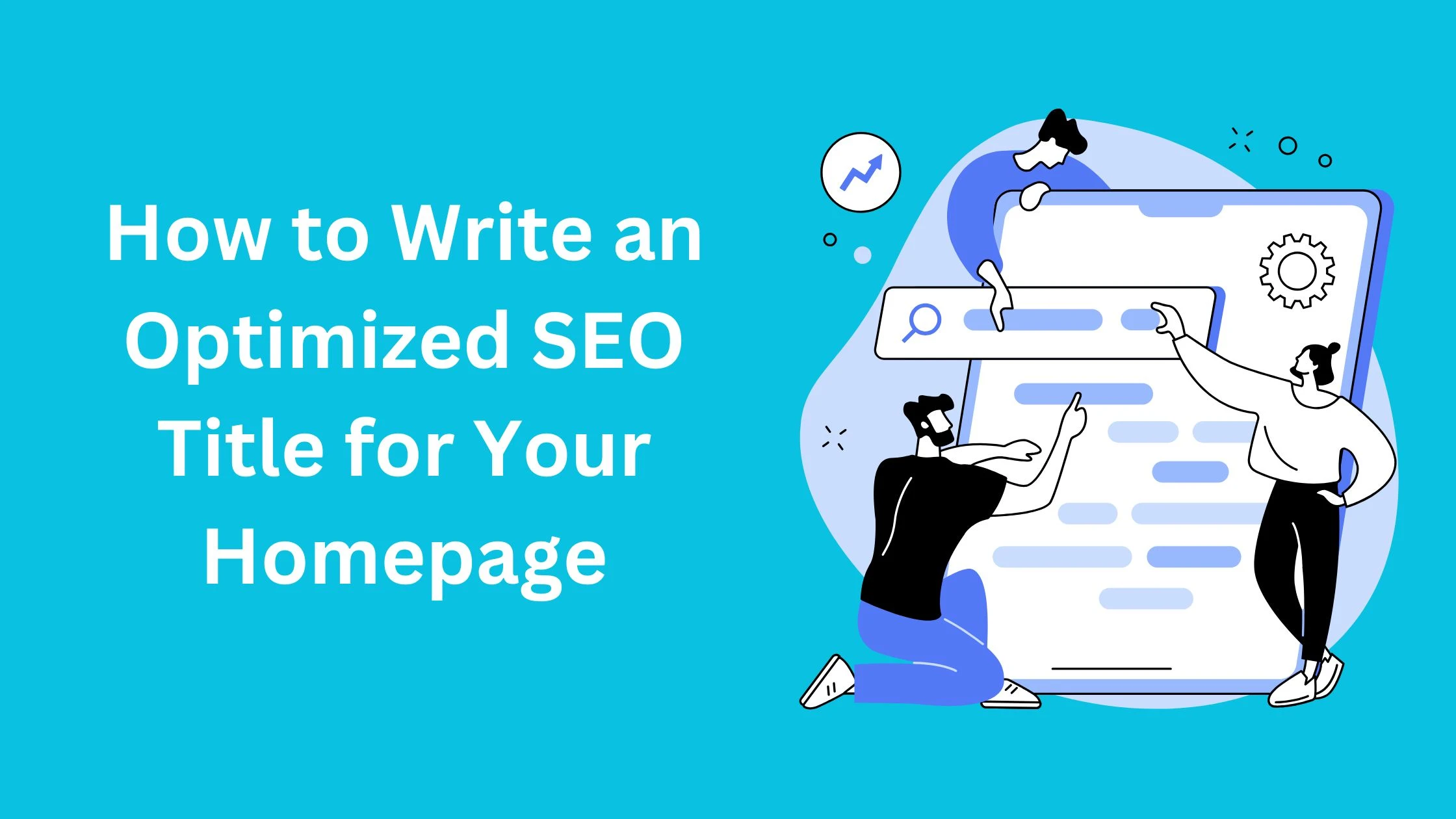How to Write an Optimized SEO Title for Your Homepage

Your homepage title is one of the most crucial elements of your website’s SEO strategy. It serves as the first impression for both search engines and users, influencing click-through rates (CTR) and rankings on search engine results pages (SERPs). A well-optimized SEO title can significantly impact organic traffic and enhance the visibility of your site.
In this guide, we’ll explore the best practices for crafting an SEO-friendly homepage title, backed by the latest industry trends, data-driven insights, and actionable strategies. By the end of this article, you’ll understand how to create an optimized title that boosts CTR and improves your website’s overall SEO performance.
Key Strategy 1: Use Primary Keywords Effectively
Why It Works
Search engines use the SEO title tag as a major ranking factor when determining the relevance of a web page. Incorporating primary keywords strategically in your homepage title ensures that search engines understand your content, increasing your chances of ranking higher on Google search results.
How to Implement It
- Identify Your Primary Keywords: Use keyword research tools to find high-volume, low-competition keywords relevant to your business.
- Place Keywords Strategically: Your main keyword should appear at the beginning of the title to maximize its impact.
- Avoid Keyword Stuffing: Overloading your title with keywords can make it look spammy and reduce readability. Keep it natural and user-friendly.
Example
Instead of: “Best Shoes Online Shoes Buy Shoes Discount Shoes” Use: “Best Online Shoe Store – Quality Footwear at Affordable Prices”
Key Strategy 2: Optimize for Click-Through Rates (CTR)
Why It Works
A compelling title not only ranks well but also entices users to click on your page. Higher CTR signals to search engines that your page is relevant, which can positively impact rankings.
How to Implement It
- Use Power Words: Words like “Best,” “Ultimate,” “Guide,” “Top-Rated,” and “Exclusive” grab attention.
- Create a Sense of Urgency: Phrases like “Limited Offer” or “Act Now” encourage clicks.
- Make It Descriptive and Engaging: Clearly convey what users can expect when they click on your page.
Example
Instead of: “SEO Tips for Websites” Use: “The Ultimate SEO Guide: Boost Your Website’s Rankings Today”
Emerging Trends in SEO Titles
1. AI-Generated Titles
With advancements in AI and machine learning, Google is now rewriting title tags based on search queries. Ensuring your title is relevant and well-structured can prevent automatic changes that may reduce CTR.
2. SERP Feature Optimization
Rich snippets, featured snippets, and structured data play a role in title optimization. Formatting your title with question-based structures can improve visibility in voice search and featured snippets.
3. User Intent Optimization
Search engines prioritize results that match user intent. Aligning your homepage title with what users are searching for enhances discoverability.
Content Optimization: Enhancing Readability and Engagement
Best Practices
- Keep It Under 60 Characters: Google truncates longer titles in search results, cutting off important information.
- Ensure Brand Presence: If space allows, include your brand name at the end of the title.
- Complement with a Strong Meta Description: The SEO title tag and meta description should work together to entice users.
Tracking & Performance: Measuring Success
Tools to Use
- Google Search Console: Monitor impressions, CTR, and ranking changes.
- Google Analytics: Track user engagement and behavior after clicking on your homepage.
- A/B Testing: Experiment with different title variations to see which performs best.
Adjusting Strategies
If your CTR is low despite high rankings, consider tweaking your title using different keywords, power words, or emotional triggers.
Multichannel Approach: Expanding Visibility Beyond SERPs
Where Else to Optimize Titles
- Social Media: Use engaging titles when sharing your homepage link.
- Browser Tabs: The HTML title tag should be clear and recognizable when users have multiple tabs open.
- Email Marketing: Use optimized subject lines that mirror your SEO title strategy.
Future Outlook: Staying Ahead in SEO Title Optimization
Predictions
- Increased AI Influence: As AI evolves, title generation and optimization will become more dynamic.
- Greater Emphasis on User Experience: Google’s algorithms will continue prioritizing user-friendly, high-CTR titles.
- Voice Search Optimization: Conversational titles will gain importance as voice search usage grows.
Final Thoughts
Crafting an optimized SEO title for your homepage is essential for search engine rankings and user engagement. By incorporating primary keywords strategically, focusing on click-through rates, and staying updated with SEO trends, you can ensure your homepage stands out in search results.
Key Takeaways:
✅ Use relevant keywords naturally.
✅ Optimize for CTR with engaging, action-driven titles.
✅ Stay updated with emerging SEO trends and AI-driven changes.
✅ Measure and adjust your title’s performance regularly.
✅ Leverage a multichannel approach to maximize visibility.
By applying these strategies, you’ll enhance both search engine rankings and user engagement, ensuring your homepage remains competitive in an ever-evolving digital landscape. Also check out our on-page optimization techniques

With 5+ years of SEO experience, I’m passionate about helping others boost their online presence. I share actionable SEO tips for everyone—from beginners to experts.
